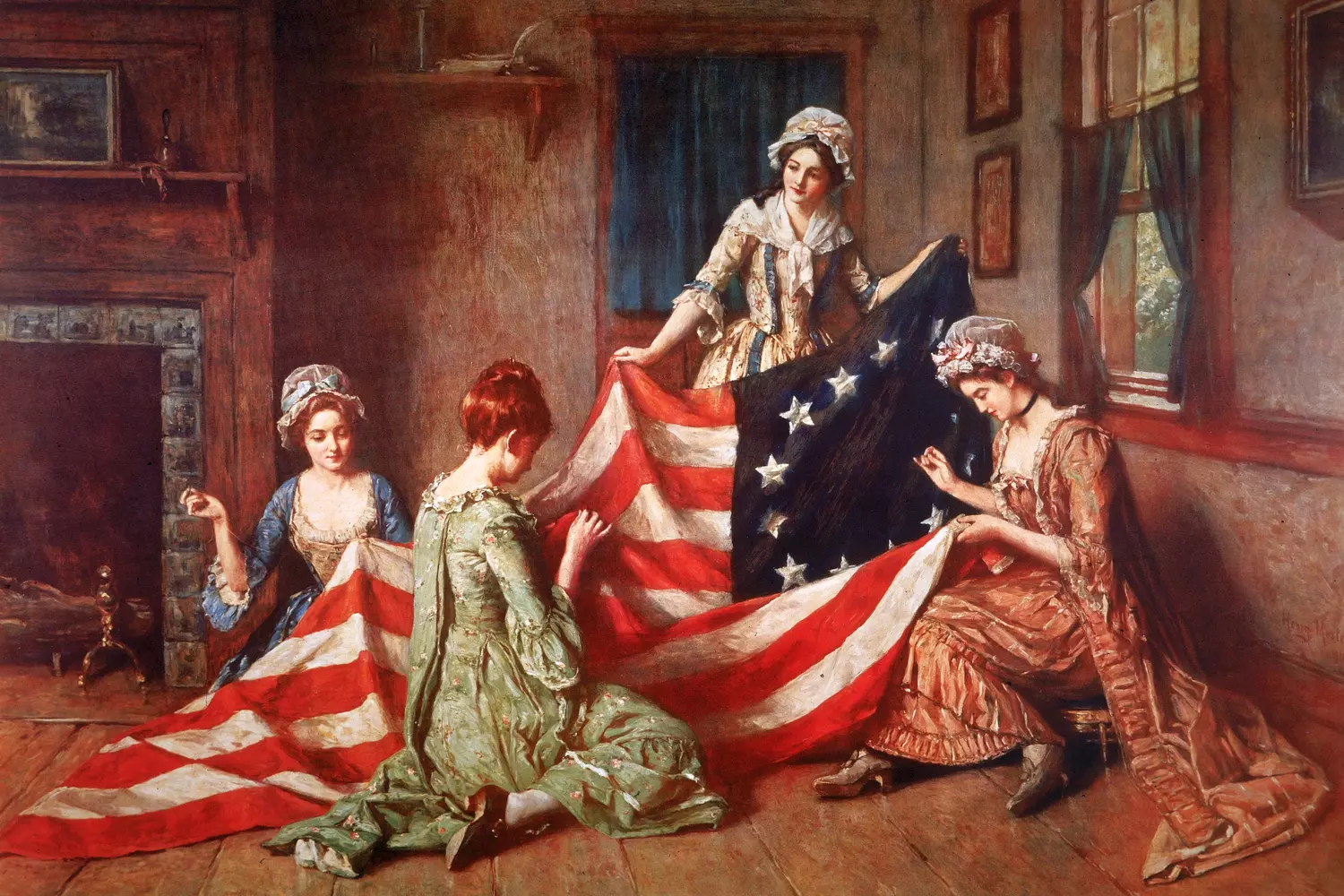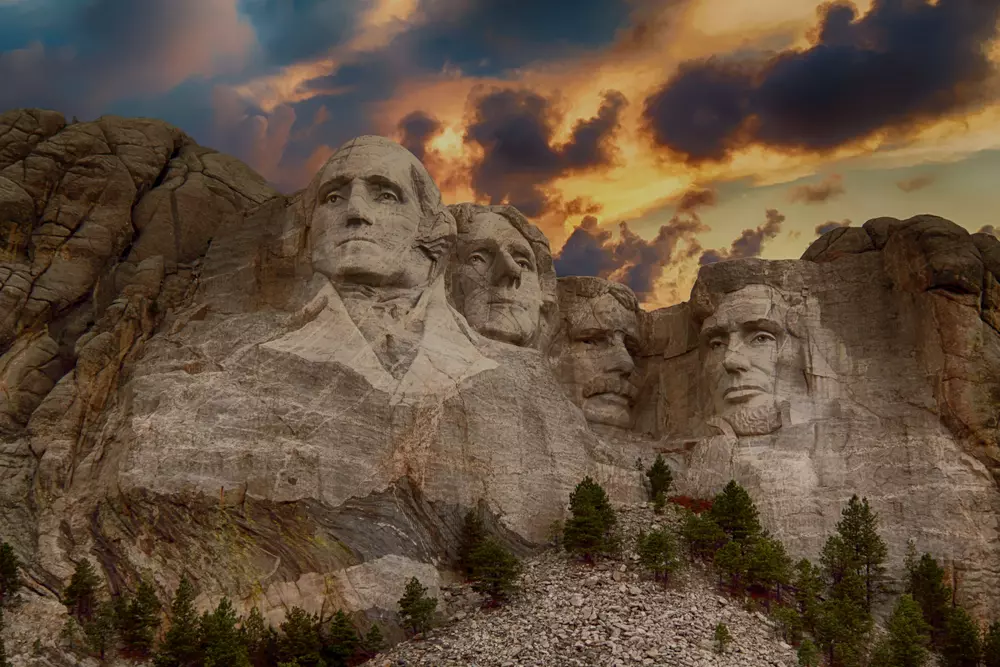George Washington is one of the most iconic figures in American history — a man whose name has become synonymous with independence and democratic values. His contributions to the founding of the United States are immeasurable, and the decisions he made continue to shape the modern world. Washington not only led the fight for independence but also laid the foundation for the United States as the first democratic nation of the modern era.
His leadership qualities, ability to inspire others, and capacity to make pivotal decisions made him one of the greatest statesmen in history. In this article, we will take a closer look at his life, political journey, personal experiences, achievements, and lasting influence on the world today.
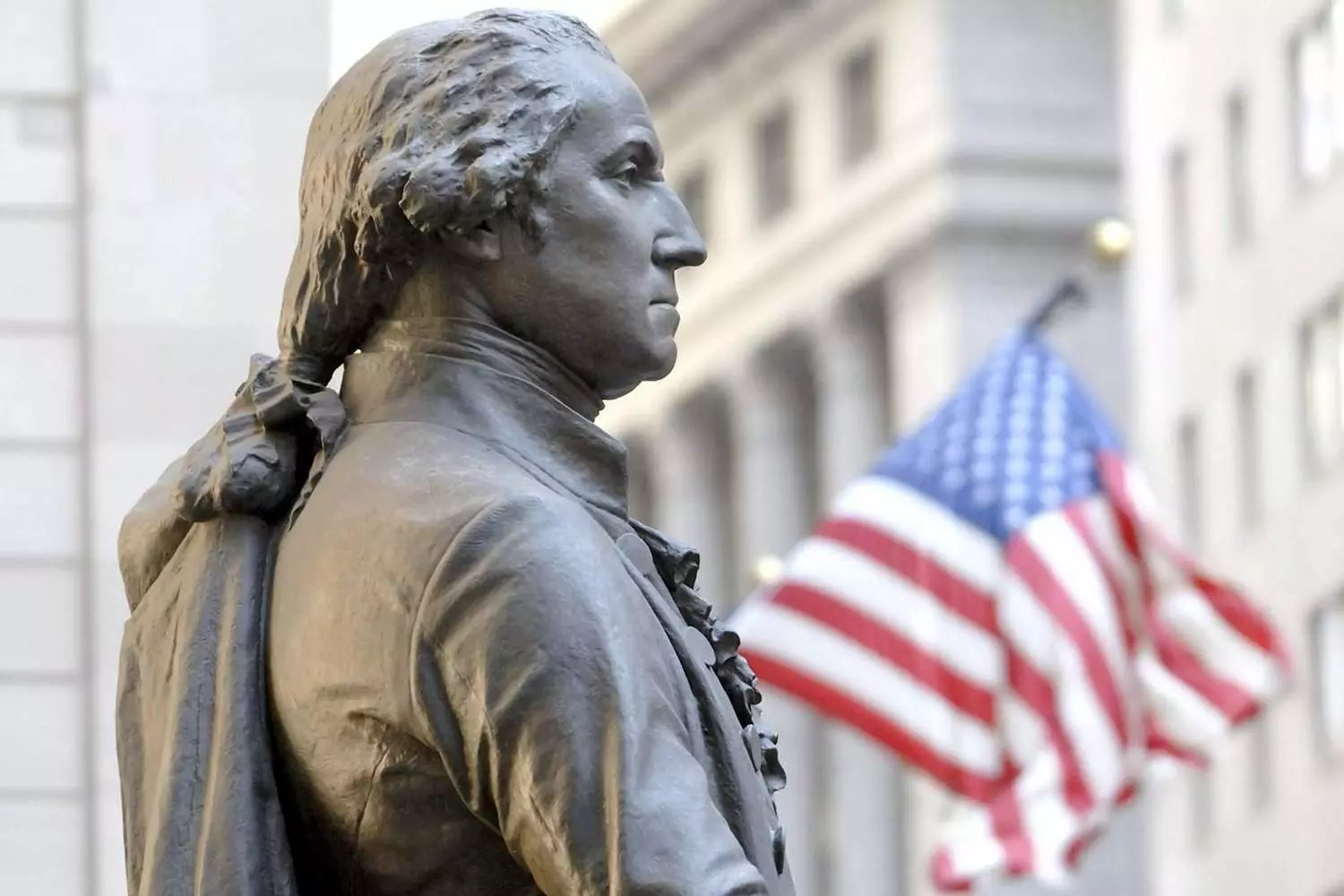
Childhood and youth
George Washington was born on February 22, 1732, in Virginia, into a family of landowners whose roots traced back to an ancient English lineage. The Washington family name originates from County Durham, England, where their ancestors owned land and held prominent social positions. George’s grandfather, Lawrence Washington, emigrated to Virginia in the 17th century in search of new opportunities, while his father, Augustine Washington, was a wealthy planter who owned vast tobacco plantations. However, his father’s untimely death when George was only 11 years old left a profound mark on his childhood — forcing him to take on responsibilities early and help his mother manage the estate.
- Washington grew up in the countryside and received his early education at home. Later, he studied under private tutors, learning arithmetic, geometry, geography, and the basics of Latin. Unlike many future statesmen, however, he never attended a university. From a young age, Washington showed a keen interest in mathematics, cartography, and military affairs.
- At 16, he became a surveyor, mapping the western territories of Virginia. This work was not only physically demanding but also dangerous, requiring him to travel through dense forests and lands inhabited by hostile tribes. The experience hardened his character and introduced him to influential figures in the colony — connections that would later prove crucial to his military and political career.
Military career
In 1754, the French and Indian War broke out, giving Washington his first taste of battle. He commanded British troops in the fight for Fort Necessity but found himself surrounded by the French and forced to surrender. Despite this setback, the experience taught him valuable lessons in strategy, diplomacy, and warfare under difficult conditions.
Later, Washington was appointed commander of the Virginia Regiment, where he distinguished himself as a skilled tactician.
- He organized the defense of frontier settlements against Native American raids and took part in General Braddock’s expedition, which ended in a disastrous defeat for the British forces. During the retreat, Washington displayed remarkable courage, rescuing surviving soldiers and leading them to safety — an act that earned him respect and recognition among military leaders.
- Over the following years, he continued to defend Virginia, improving the discipline of his troops and developing a combat style based on mobility and surprise attacks. His military prowess and leadership qualities solidified his reputation as a capable officer, preparing him for his future role in the Revolutionary War.
Despite popular myths, Washington’s dentures were not made of wood.
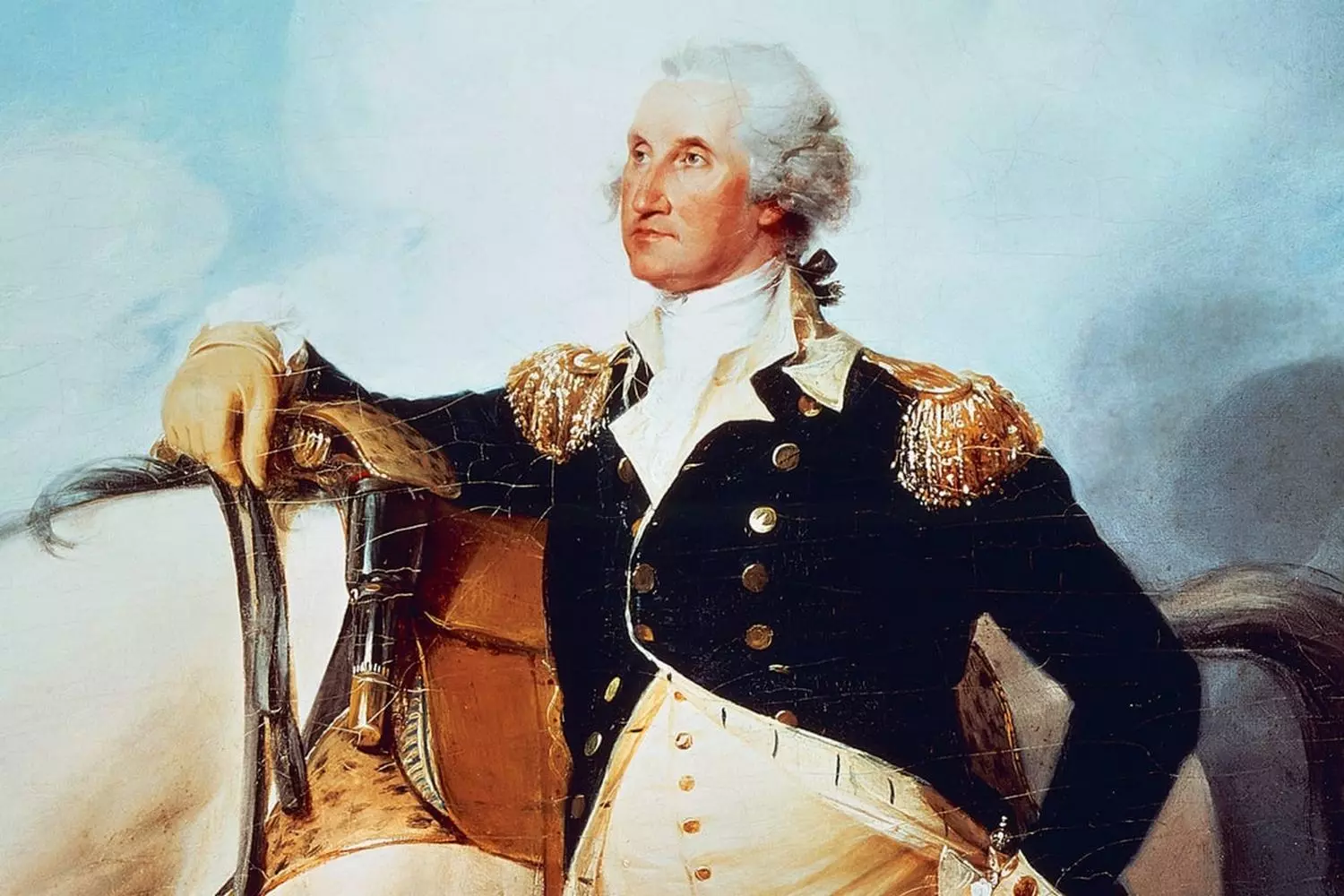
The Life of a Planter and Marriage to Martha Custis
After retiring from military service, Washington returned to life as a planter. In 1759, he married Martha Custis — a wealthy widow who owned vast estates and enslaved workers. Their marriage brought him not only personal happiness but also a significant increase in wealth, allowing him to focus on developing his Mount Vernon plantation.
Washington was deeply invested in agriculture, introducing innovative farming techniques and experimenting with different crops. Moving away from traditional tobacco farming, which depleted the soil, he shifted his focus to wheat and other grains. He also raised livestock, engaged in trade, and managed his estates with exceptional efficiency.
At the same time, he became increasingly involved in public and political affairs.
- In 1758, he was elected to the Virginia House of Burgesses, where he quickly established himself as a staunch advocate for colonists' rights.
- He opposed taxation without representation and criticized British policies that restricted American economic freedoms.
- In his speeches, Washington emphasized that the colonies should govern themselves rather than be subject to the decisions of the British Parliament. His views became more resolute over time, especially after the passage of the 1765 Stamp Act and the 1774 Intolerable Acts, which he saw as blatant violations of American rights. During this period, he fully embraced the idea of independence — a belief that would lead him to take an active role in the fight for freedom.
Personal Tragedy and Financial Independence
Although George and Martha Washington had no children together, he raised her two children from her previous marriage — John “Jacky” and Martha “Patsy” Custis. However, in 1773, the family was struck by tragedy when 17-year-old Patsy died from epilepsy. Her death was a devastating blow to Washington.
At the same time, Martha Custis’s inheritance, which eventually passed to Washington himself, provided him with financial stability. He gained control over extensive landholdings and wealth, allowing him to expand his estates, invest in agricultural development, and dedicate more time to politics. This financial independence played a crucial role in his future, enabling him to support the Patriot movement, fund militias, and supply the army during the Revolutionary War.
The History and Meaning of the American Flag
Role in the American Revolutionary War
In 1775, as the American Civil War began, the Continental Congress faced the critical decision of selecting a leader to command the united colonial forces against the powerful British army. George Washington was the obvious choice:
- He had military experience from the Seven Years' War.
- He was known for his strategic thinking and held an impeccable reputation among the colonists.
- As a native of Virginia — one of the largest and most influential colonies — his leadership helped unify the states around a common cause.
On June 22, 1775, the Continental Congress unanimously appointed Washington as the Commander-in-Chief of the Continental Army. Despite a lack of professional soldiers, he managed to organize resistance through guerrilla tactics, surprise attacks, and a highly mobile strategy. He avoided prolonged battles with the British, instead focusing on wearing them down and securing support from allies. This approach ultimately played a crucial role in achieving American independence.
Key Battles of the Revolutionary War
- Siege of Boston (1775-1776)
One of Washington’s first major campaigns as commander. His forces successfully surrounded the British troops, forcing them to evacuate the city in March 1776. - Battle of New York (1776)
A challenging chapter in Washington’s military career. The British captured the city, delivering a major blow to the Continental Army. However, Washington managed a strategic retreat, preserving his forces. - Battle of Trenton (1776)
A surprise attack on Christmas night resulted in a crucial victory. Washington’s troops crossed the frozen Delaware River and decisively defeated the Hessian mercenaries fighting for the British. This triumph reinvigorated American morale and renewed hope for victory. - Battle of Princeton (1777)
A tactical maneuver led to another important victory, further solidifying patriot support. - Winter at Valley Forge (1777-1778)
A brutal period for Washington’s army, as soldiers suffered from cold and supply shortages. However, with the help of Baron von Steuben, the army was reformed and significantly improved in discipline and effectiveness. - Philadelphia Campaign (1777-1778)
A series of battles for control of Pennsylvania. Though the British captured Philadelphia, the Continental Army endured, surviving the harsh winter at Valley Forge. - Battle of Monmouth (1778)
A major engagement in New Jersey where Washington’s improved army held its own against the British, showcasing the benefits of von Steuben’s training. - Siege of Yorktown (1781)
In alliance with the French, Washington secured a decisive victory. The Franco-American coalition played a critical role in the final stage of the war. This victory forced Britain to recognize American independence, bringing the war to an end with the signing of the Treaty of Paris.
After the triumph at Yorktown in 1781, British forces began their gradual withdrawal from American territory. The Treaty of Paris, signed in 1783, formally acknowledged the independence of the United States. Having fulfilled his duty, Washington resigned as commander on December 23, 1783, returning to Mount Vernon with hopes of a peaceful life.
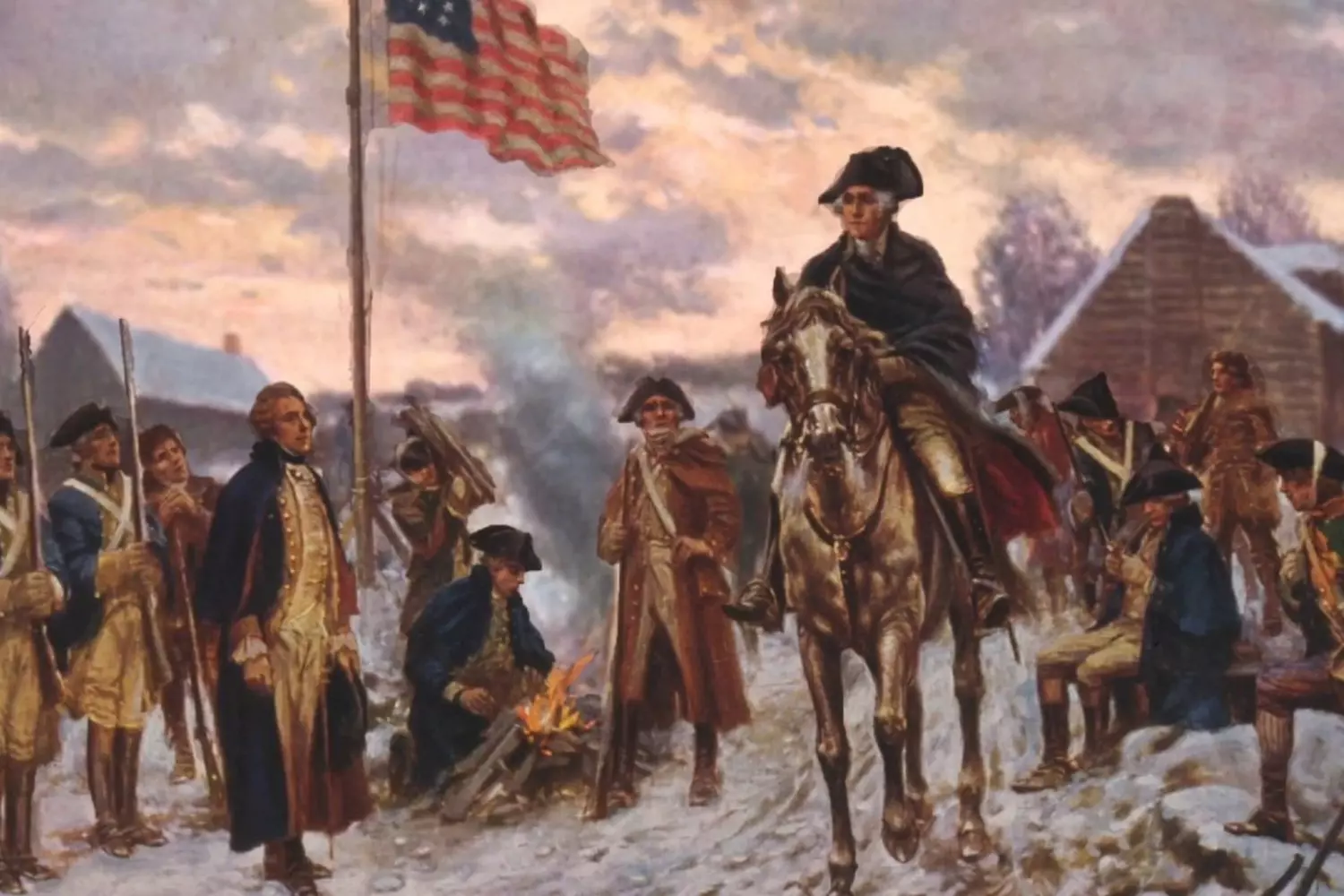
Washington's Role in Drafting the US Constitution
The Philadelphia Convention was a landmark event that reshaped the future of the United States. It played a pivotal role in drafting the new Constitution, establishing a strong federal government crucial to the young nation's development. George Washington’s influence was central to the convention’s success.
Unlike many delegates actively involved in politics post-war, Washington had retired to his Mount Vernon estate, distancing himself from public affairs. However, his exceptional leadership and role in the Revolution made him the ideal candidate to preside over the convention.
- Washington symbolized unity and stability in the fragile republic. His reputation as Commander-in-Chief of the Continental Army was vital to the convention’s credibility. For many, he represented hope amid internal divisions.
- He was a man of action, focused on establishing order and strong foundations for the nation. He firmly supported a strong central government necessary for national security and growth. His wisdom and authority helped the delegates reach consensus on key issues.
Finalizing the Constitution
- The convention’s debates were intense. Different factions advocated varying visions of government — some, like James Madison, supported a strong federal structure, while others, like Richard Henry Lee, preferred decentralized power. Washington firmly backed a centralized government that could operate independently of individual states.
- He also endorsed the system of checks and balances, which was ultimately incorporated into the Constitution.
- By September 1787, the convention had completed its work, and the final draft of the Constitution was signed — an event of global significance. The United States had taken a definitive step toward building a democratic republic with a robust federal system.
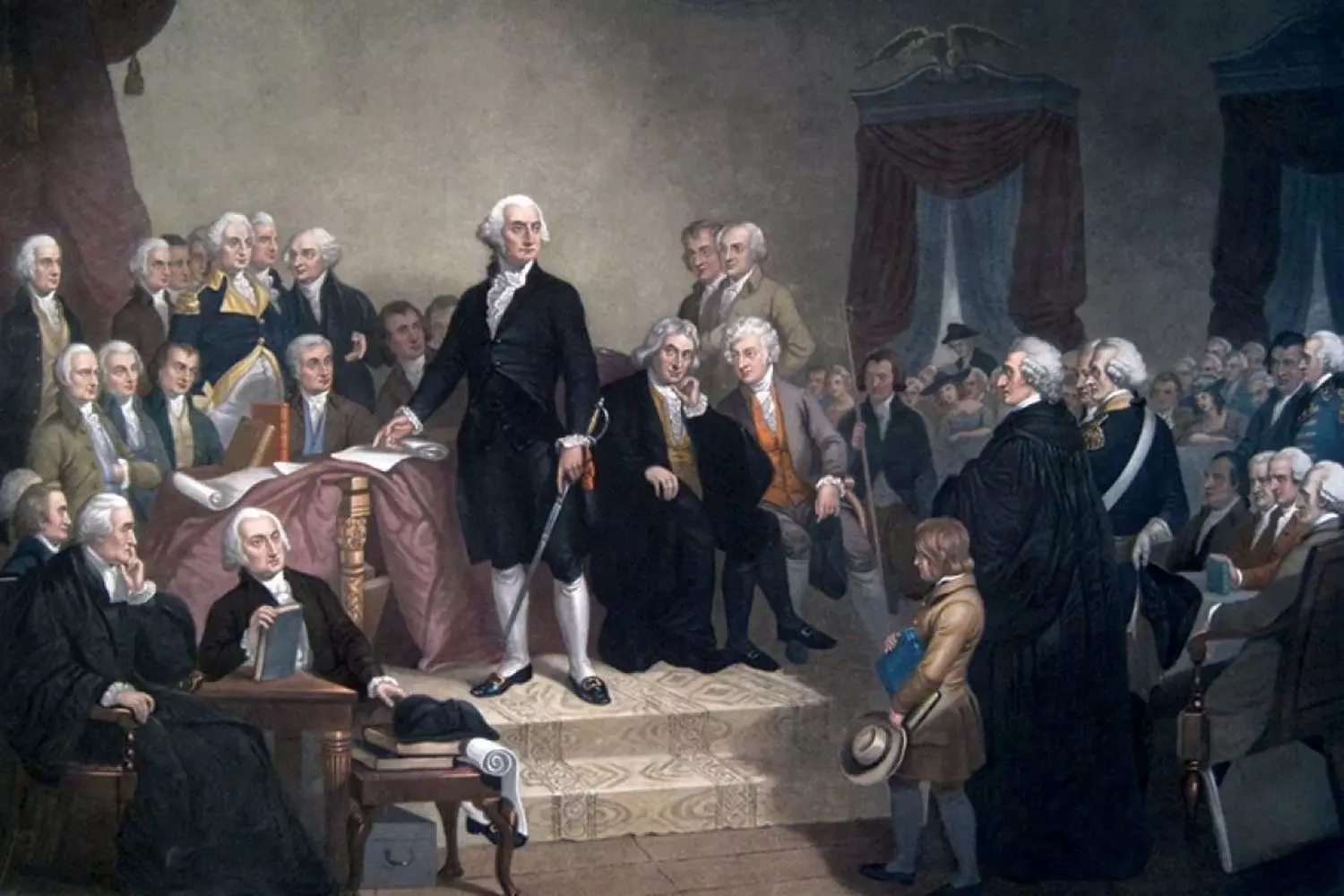
The First President of the United States
Two years after the convention, in 1789, Washington was urged by the public and political leaders to run for president. Given his unmatched reputation, he was unanimously elected. His presidency began on April 30, 1789, in New York City, the nation's capital at the time. His administration faced the immense challenge of shaping the government of the new republic.
Establishing the Federal Government
Upon taking office, Washington inherited a Constitution that, while written, was yet to be implemented in practice. He had to transform its provisions into a functioning government, ensuring effective administration and state relations.
- He formed the first presidential cabinet, appointing top officials to key positions.
- He established four primary departments: Treasury, State, War, and Justice.
- Each cabinet member not only managed their domain but also directly advised the president, shaping national policy.
This practice became a fundamental aspect of American governance, with the cabinet playing a crucial role in decision-making.
Financial Reforms and Debt Management
One of Washington’s greatest challenges was the country’s financial crisis. The government was burdened by war debt, necessitating urgent economic policies. He turned to Alexander Hamilton, the first Secretary of the Treasury, for solutions.
Hamilton proposed a bold plan, including the creation of a national bank, federal assumption of state debts, and a taxation system to stabilize finances. These measures sparked fierce debate, especially among states' rights advocates, but Washington firmly supported Hamilton. His policies significantly strengthened the U.S. economy and laid the foundation for American capitalism.
The Bill of Rights
A major achievement of Washington’s first term was the adoption of the Bill of Rights—the first ten amendments to the Constitution—ensuring fundamental freedoms such as:
- Freedom of speech
- The right to bear arms
- Protection against unlawful searches and seizures
Fulfilling his campaign promise, Washington ensured that American citizens had legal guarantees for their rights.
Political Divisions and Party Conflicts
Washington sought to avoid partisan politics, fearing it would divide the nation. However, tensions between Hamilton’s supporters, who favored a strong central government, and Thomas Jefferson’s faction, which advocated for state autonomy, led to the emergence of the first political parties — the Federalists and the Democratic-Republicans.
In foreign affairs, Washington adopted a policy of neutrality, steering the U.S. clear of European conflicts, particularly the Napoleonic Wars. His famous 1796 Farewell Address warned against permanent alliances with foreign nations, shaping American foreign policy for decades.
By the end of his first term in 1792, Washington faced mounting political tensions and the immense burden of leading a young nation. Concerned about the dangers of prolonged rule, he chose not to seek unlimited power, setting a vital precedent for democratic leadership.
Washington never lived in the White House — it was constructed after his presidency.
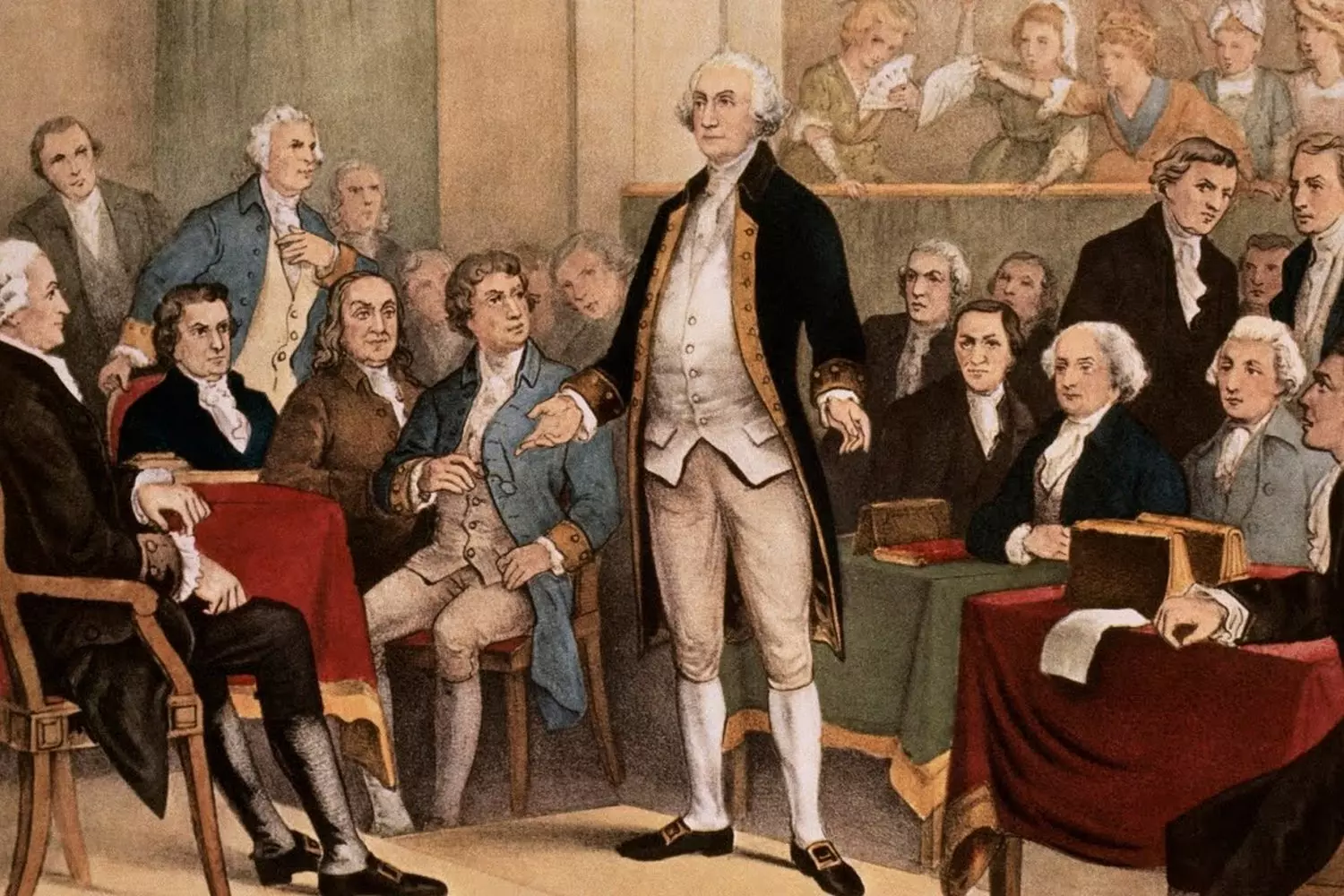
Second Term: Strengthening Independence and Addressing Domestic Issues
However, after successfully completing his first presidential term, George Washington was once again unanimously elected for a second term in 1792. His leadership was considered essential to maintaining stability in the young nation, which continued to face both internal and external challenges.
Although Washington was initially met with enthusiasm at the start of his second term, internal political conflicts began to intensify:
- Amid economic growth and development, political factions started to take shape, leading to a polarization of opinions. This period saw the emergence of two major political groups: the Federalists, who supported a strong central government and were led by Alexander Hamilton, and the Republicans (Democratic-Republican Party), who advocated for decentralized power and were led by Thomas Jefferson.
- Despite Washington’s efforts to promote unity, his second term marked a point where these divisions, which had evolved into formal political parties, could no longer be ignored. In an attempt to keep the country from internal strife, Washington sought to maintain neutrality, but political tensions continued to rise.
Foreign Policy and the Struggles of Neutrality
Foreign affairs during this period became increasingly complex and perilous, especially due to the ongoing conflict between Britain and France, which raged across Europe. During his second term, Washington found himself caught between the interests of both nations, as each sought to draw the United States into their wars.
- Amid the French Revolution of 1789, France, fighting for its own liberty, expected American support. However, Washington grew increasingly concerned over the rise of radical elements within France.
- At the same time, Britain, despite the 1783 Treaty of Paris, continued its aggressive actions against the U.S., including seizing American ships and supporting Native American tribes hostile to settlers in the western territories.
To prevent the U.S. from being dragged into another European conflict, Washington, under pressure from both sides, signed the famous Neutrality Proclamation of 1793. This declaration formally established the United States' stance of neutrality in European wars. It was a crucial decision that set the foundation for American foreign policy for decades to come, reinforcing the country’s diplomatic independence.
Nevertheless, pressure on the president persisted. In 1794, after British forces seized American ships and attacked settlements in western territories, Washington signed the Jay Treaty with Britain. While the treaty helped ease tensions with Britain, it infuriated the Republicans, who saw it as a concession to the British.
Domestic Crises and the Strengthening of Federal Power
Domestically, the intensifying struggle for political influence soon escalated into serious crises. One of the most notable was the Whiskey Rebellion of 1794 in Pennsylvania. Sparked by a high tax on whiskey production, the rebellion became a symbol of the discontent among western farmers and small producers, who felt that the federal government was infringing upon their rights.
Washington responded decisively, deploying federal troops to quell the uprising and restore order. This action underscored the necessity of federal authority and demonstrated that the U.S. government would not tolerate threats to its stability. While Washington saw this as a necessary assertion of federal power, it also highlighted the ongoing challenge of balancing centralized authority with states’ rights.
Political Tensions and a Pivotal Election
As Washington navigated both domestic and foreign challenges, the political landscape grew increasingly volatile. With party divisions deepening, Washington faced the critical decision of selecting his successor. Firmly believing that two terms were sufficient for any president, he made the historic decision not to seek a third term. This set an important precedent for the voluntary limitation of presidential terms — a tradition that would remain unbroken until the 20th century.
In 1796, as political tensions escalated, Washington delivered his famous Farewell Address. In it, he warned against the dangers of political factions and urged the nation to remain independent from foreign entanglements. His departure from the presidency marked the beginning of a new era in American history, establishing a precedent for the peaceful transfer of power.
First in war, first in peace, and first in the hearts of his countrymen.Henry Lee III
George Washington's Later Years and Legacy
After completing his second term in 1797, George Washington finally stepped down as president and returned to his beloved estate, Mount Vernon, in Virginia. These final years were a period of peace and detachment from politics, though his health had already been weakened by years of service. Even in retirement, Washington remained an influential figure in American political life and continued to shape the young nation’s future.
- In December 1799, Washington’s health took a serious turn for the worse. He suffered from severe throat pain and difficulty breathing. On December 12, despite feeling unwell, he continued his usual activities, not wanting to trouble those around him.
- His symptoms, including throat inflammation and respiratory distress, suggest he may have suffered from a severe infection — one that could not be effectively treated at the time. The doctors who attended him attempted bloodletting and other methods, but these only worsened his condition.
At 10:30 PM on December 14, 1799, at the age of 67, George Washington passed away. His death was a profound tragedy for the young nation, plunging Americans into deep mourning. His passing left an irreplaceable void, as the country grieved for the man who had not only founded the nation but had also served as its moral compass.
Washington was laid to rest on December 18, 1799, at his Mount Vernon estate, in the family crypt, as he had wished. Over time, his tomb became a site of pilgrimage, as thousands came to pay their respects to the great leader.
His passing also marked the beginning of a tradition in which the nation honors its presidents and key historical figures upon their deaths. In Washington’s honor, monuments were erected, his likeness was featured on currency, and even a city on the West Coast — Washington — was named after him, eventually becoming the nation’s capital.
Washington rejected the title of “Your Excellency” and insisted on the simple address of “Mr. President.”
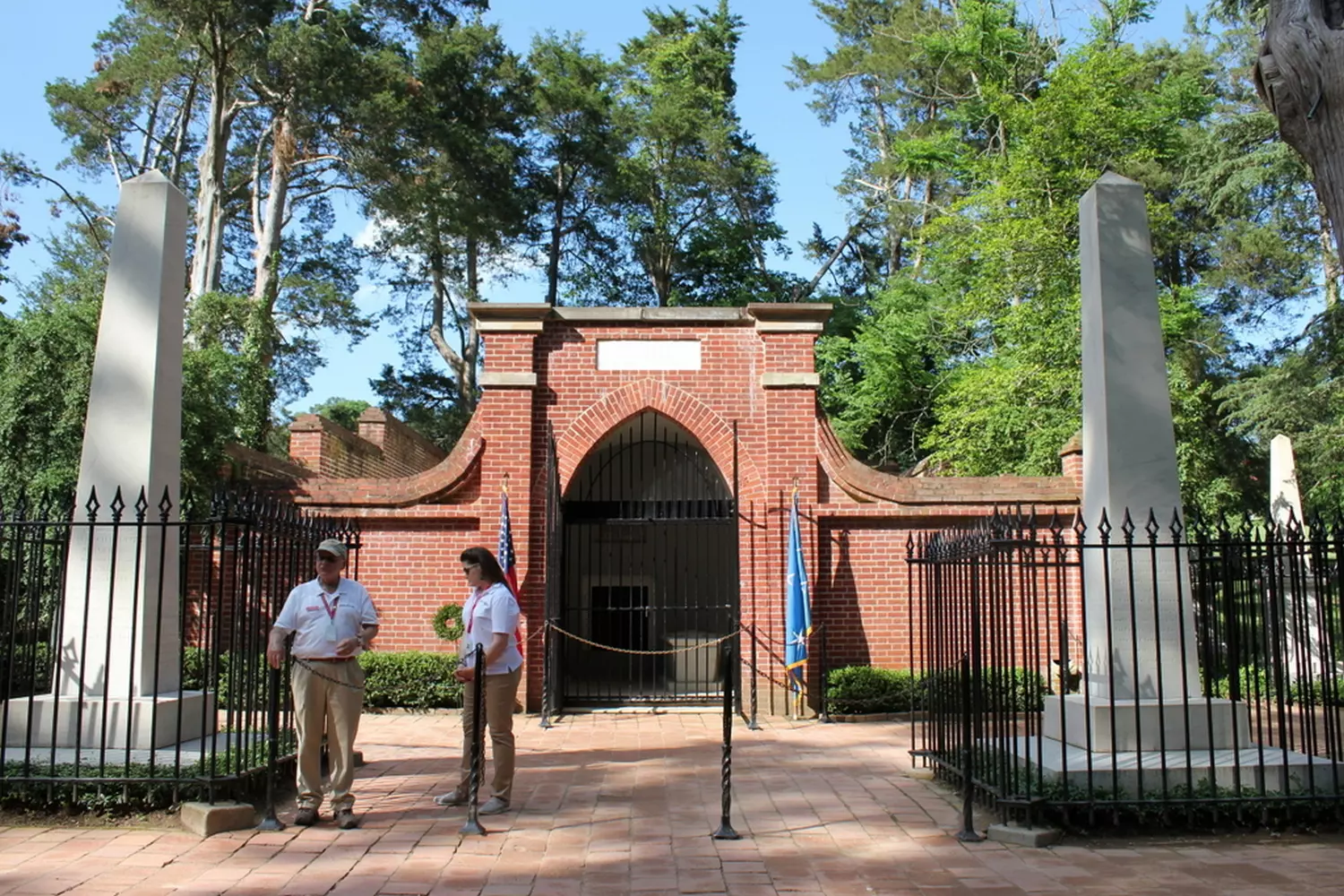
The Legacy of George Washington
George Washington was not just the founder of an independent nation — he left an indelible mark on world history. His legacy continues to shape American political culture and the ideals he embodied. More than two centuries after his death, Washington remains a symbol of honor, sacrifice, and the democratic values upon which America was built. But what exactly defines his legacy, and how does it manifest in today’s world?
- Washington as the Founder of the American Nation
Washington’s most significant achievement was his leadership in establishing the United States of America. He played a crucial role in securing victory over Britain in the Revolutionary War and had a profound influence on the creation of the U.S. Constitution. As the country’s first president, he set many precedents, including the peaceful transfer of power, the limitation of presidential terms, and an unwavering commitment to national unity. - Traditions Established by Washington That Endure Today
One of Washington’s most remarkable contributions was his rejection of absolute power. In 1796, when he voluntarily stepped down after two terms, he set a critical precedent for the American political system. His decision became a model for future presidents and cemented the principle that leadership should change through democratic means, without violence or dictatorship. This principle laid the foundation for the United States’ commitment to peaceful transitions of power.
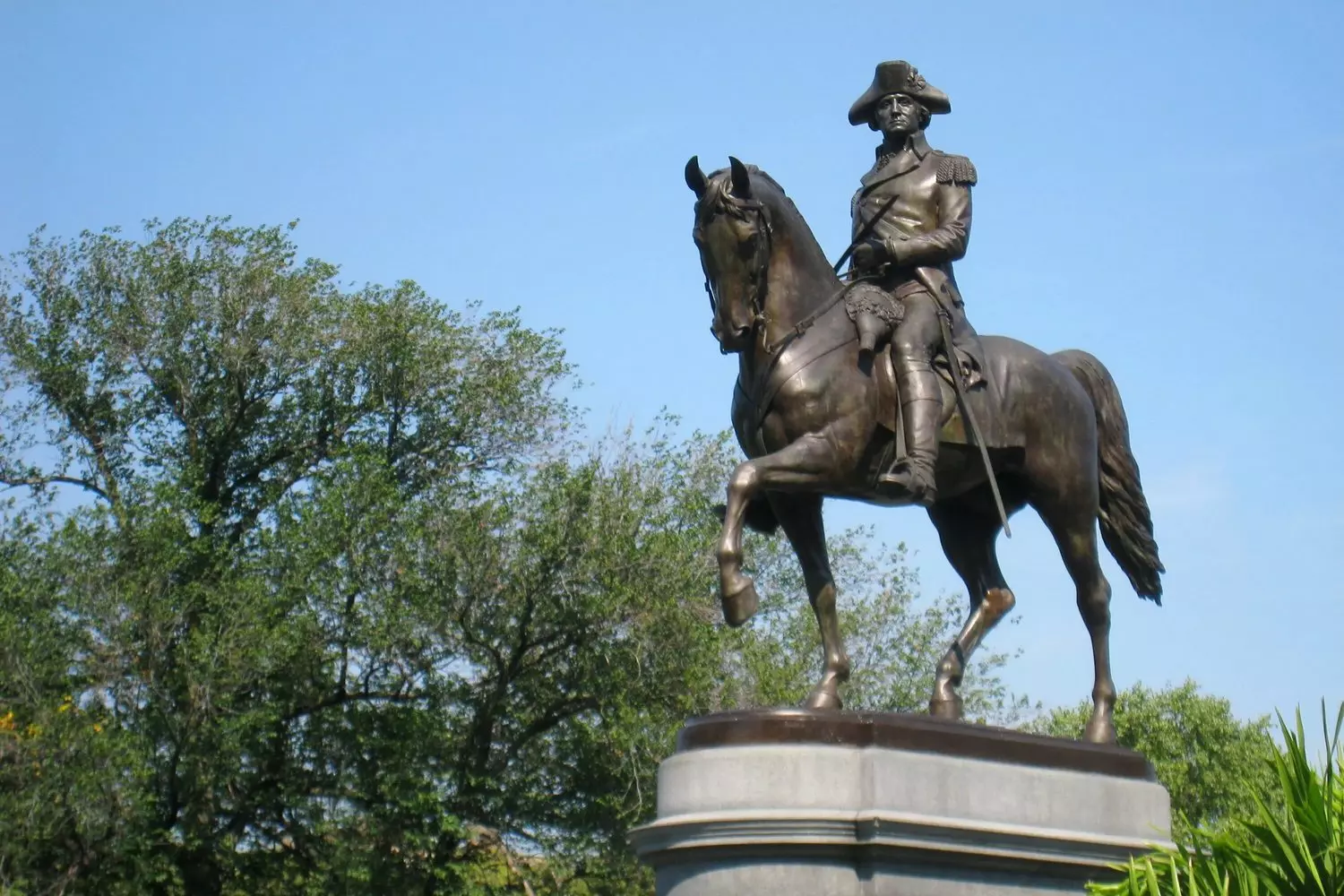
A Timeless Legacy for Generations to Come
George Washington was not only the architect of America but also a symbol of the values the nation continues to uphold and defend. From his role in shaping the country to the moral principles he instilled, his influence continues to resonate in American political life and beyond. His legacy remains relevant not just to Americans but to all who believe in democracy, equality, and freedom.
American Butler is proud to offer exclusive tours of historical sites connected to George Washington. Discover the history of this great leader and experience the spirit of American history with us!














